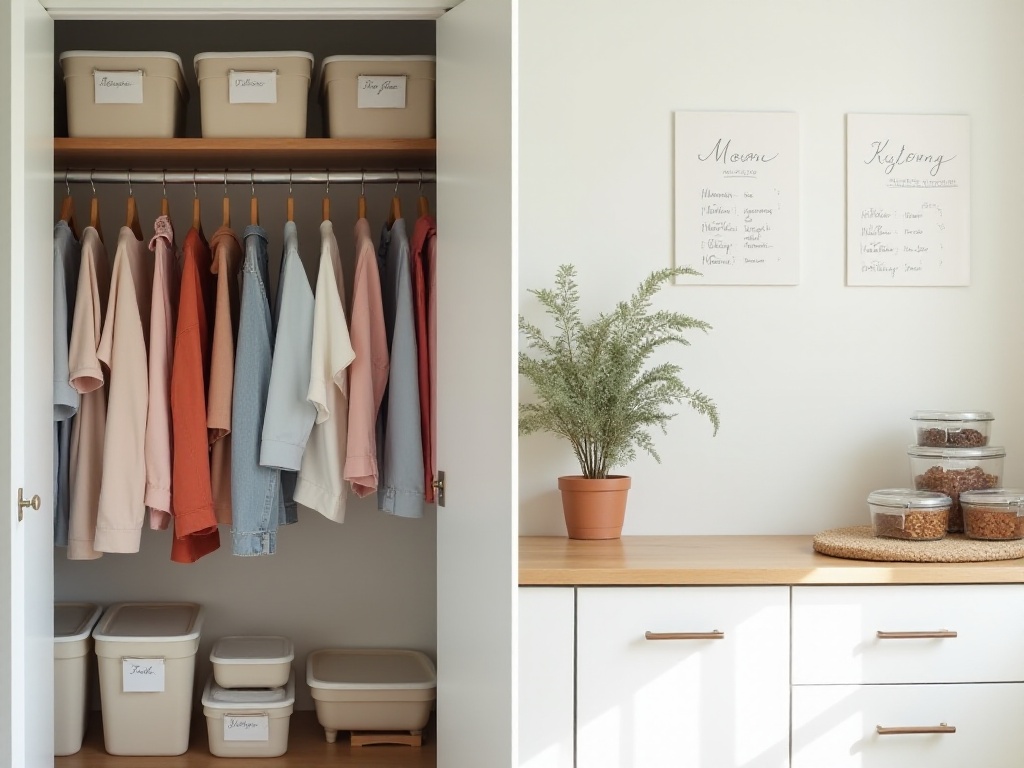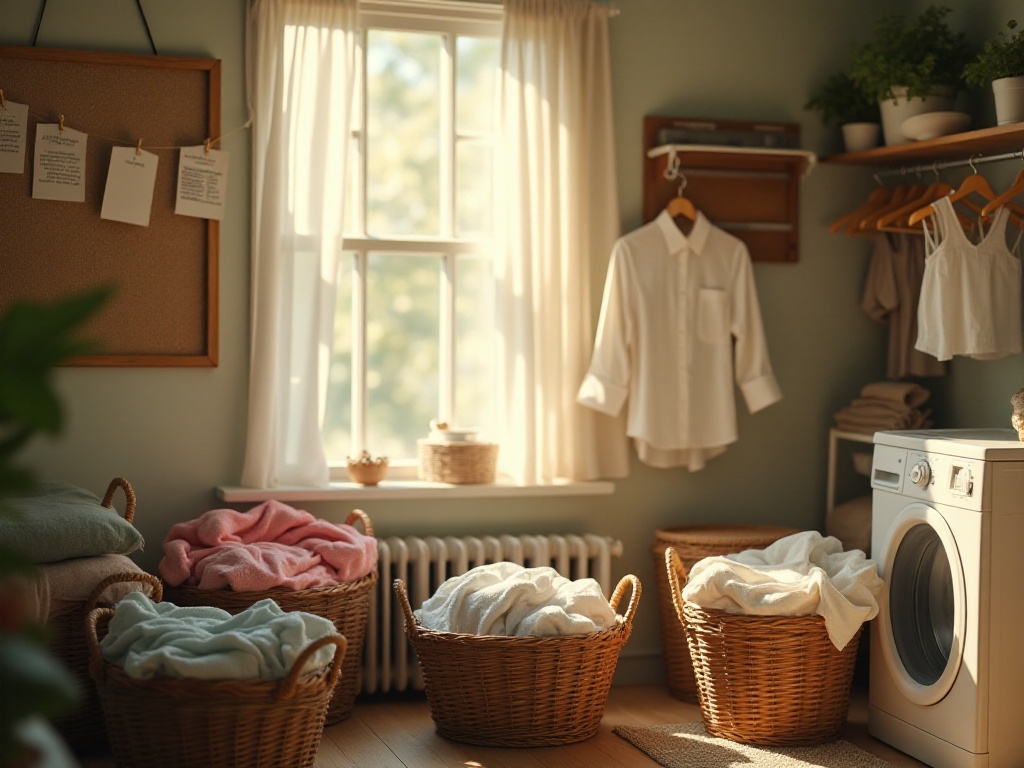Opening Thoughts
The other day while scrolling through my social media feed, I saw a status from one of my close friends lamenting about her new wool sweater. After just one wash, it looked terrible - not only was it wrinkled, but it was also covered in pills and too ugly to wear outside. The moment I saw that post, I was reminded of my own similar experiences and how many pieces of clothing I had ruined in the past. It's such a shame - I wish I had known these care tips earlier. But it's never too late to learn, so let me share the pitfalls I've encountered and the lessons I've learned over the years.
Classification is Key
When it comes to clothing care, the most important thing is understanding each garment's "personality." Just like making friends, we need to understand their temperament to get along better. The same applies to clothes - different fabrics and colors require different care methods.
In terms of materials, cotton/linen, wool, and silk have completely different "personalities." Cotton and linen are like easy-going folks - straightforward and easy to deal with, generally fine with any washing method. But wool and silk are totally different - they're like pampered princesses, prone to throwing tantrums if not handled carefully.
Take wool sweaters, for example. Their fiber structure is extremely delicate and can easily deform or pill. I had a favorite camel wool sweater that cost nearly a thousand dollars, but during its first wash, I wasn't careful with the water temperature and used hot water. Afterward, the sleeves shrunk to barely cover my elbows, and the whole garment was wrinkled beyond recognition. The heartbreak - I still regret it to this day.
As for silk, it's the most delicate of all. I have a silk nightgown, and the first time I washed it, I carelessly used regular detergent and machine-washed it. After washing, the fabric became very rough and developed small wrinkles, completely losing its original smooth texture.
Regarding color classification, this is crucial. I now keep two separate laundry baskets at home - one for dark clothes and one for light clothes. This way, I don't have to search through everything when doing laundry, and there's no risk of mixing dark and light clothes.
Last summer, I made a mistake. I was really tired and saw a new white T-shirt and a dark blue pair of jeans in the laundry basket. Thinking they were both cotton, I threw them in the washing machine together. Can you guess what happened? After washing, the white T-shirt had a light blue tinge all over it. While it kind of looked like a vintage effect, this definitely wasn't what I wanted!

Washing Methods
When it comes to washing methods, there's a lot to learn. Many people think hotter water means cleaner clothes, but this is a major misconception. Based on my years of experience, cold water is actually sufficient for most clothes. It not only protects the garments but also saves electricity.
I've researched the data, and using cold water instead of hot water can reduce energy consumption by up to 90%. Just think about how much you could save on electricity bills over a year! Plus, cold water washing is much gentler on clothes, especially those prone to fading.
Another often overlooked issue is washing frequency. Studies show that the average person washes clothes 150-300 times per year. But honestly, many clothes don't need to be washed that frequently.
Take my favorite jeans, for example. Levi's CEO once mentioned in an interview that he only washes his jeans four times a year. While this might sound incredible to many people, it actually makes sense. Denim develops character with wear, and frequent washing can affect its fit and vintage appearance.
I've tried reducing washing frequency myself and found it really effective. For instance, sweaters can be worn three or four times before washing if there are no obvious stains or odors. This not only extends the life of the clothing but also saves water.
Choosing the right detergent is also crucial. I used to just buy any laundry detergent, thinking as long as it cleaned, it was fine. Later I discovered that different fabrics really need different detergents. For example, wool sweaters are best washed with specialized wool detergent to better protect the wool fibers and prevent pilling and deformation.
Another detail many people overlook is detergent amount. I used to use extra detergent, thinking it would clean better. But I found my clothes always felt not quite clean - later I learned this was because detergent was residual in the fabric fibers. Now I strictly follow the dosage instructions on the detergent packaging, and the results are actually better.

Special Care for Specific Items
When it comes to caring for special garments, it's truly a science. Let's start with jeans, which are my favorite. After years of experience, I've developed a "three-step jean care routine."
First, avoid washing if possible. If they smell a bit, just air them out on the balcony. If you must wash them, remember to turn them inside out - this preserves the worn-in effect on the outside. Most importantly, never use the dryer! The high heat will make the denim stiff and can cause fading and deformation.
As for delicate silk and lace items, I now hand wash them all. I bought special silk detergent online, keep the water temperature around 30 degrees, and gently hand wash them. According to professional sources, silk fiber damage increases by over 50% when water temperature exceeds 40 degrees.
Wool sweaters are perhaps the most challenging. I now use specialized wool detergent and always hand wash in cold water. You have to be especially careful not to wring or rub too hard, or the wool fibers will tangle together and form pills.
Here's another tip: when drying wool sweaters, it's best to lay them flat. I bought a special drying rack where I can lay wool sweaters flat to dry. This prevents deformation from the garment's own weight, especially important for heavier wool sweaters.

Storage is Also an Art
After washing, let's talk about storage. This step is equally important, as improper storage can undo all your careful maintenance work.
I've seen too many people just hanging clothes randomly on hangers, resulting in deformed garments. Choosing the right hanger is really important. Knit items need thicker hangers to reduce shoulder pressure and prevent deformation. Suits are best stored on wooden hangers, which not only maintain the suit's shape but also absorb moisture from the garment.
The storage environment is also crucial. I keep several desiccant packets in my closet and occasionally air everything in the sun. A humid environment easily breeds bacteria, leading to mold and odors. This is especially important during the rainy season.
Dark-colored clothing requires extra attention - they must be kept out of direct sunlight. Research shows that dark clothes fade three times faster in direct sunlight compared to shade. So I now store dark clothes toward the back of the closet or in garment bags.
Speaking of garment bags, they're really useful. Especially for clothes worn less frequently, garment bags prevent dust accumulation and moth damage. However, it's important to choose breathable materials so the clothes can "breathe."
Seasonal clothing storage is also technical. For example, when storing thick winter clothes during season changes, they must be cleaned thoroughly, ensuring no stains or odors remain before storage. If stored with stains, bacteria can grow over time, and the stains become increasingly difficult to remove.

Final Thoughts
After years of exploration, I've deeply realized that caring for clothes is both a science and a life attitude. It's challenging because it requires time and effort to understand different clothing characteristics; it's simple because once you establish a suitable care system, everything becomes manageable.
Now, I spend half an hour every weekend doing a "check-up" on my clothes, looking for areas that need repair and giving them some sun exposure. This habit not only makes my clothes last longer but also makes my wardrobe more environmentally friendly and economical.
Caring for clothes is also an attitude toward life. Each piece of clothing carries our memories and emotions. Taking good care of them is a way of treating our lives well. I hope my sharing helps you establish your own clothing care system.

Care Tips
Since this is a beginner's guide to care, let me share some practical tips. First, about stain removal. Different stains really need different treatment methods - this is especially important.
For oil stains, I now use dish soap to gently rub first, then wash normally. Dish soap is much better at removing oil than regular laundry detergent. For blood stains, always use cold water - never hot water, as it will set the blood into the fabric, making it harder to remove.
Then there's the pilling issue, which is really annoying. I recently bought a fabric shaver, and it works great. I had a favorite sweater that developed lots of pills after one winter - after using the fabric shaver, it looked like new again.
Regarding clothing longevity, this really deserves attention. Through careful care, a quality garment's lifespan can be extended 2-3 times. This is not only wallet-friendly but also an environmentally responsible choice.
For example, I have a cashmere coat that cost quite a bit, but through careful maintenance, I've worn it for three winters now, and it's still in great condition. In contrast, buying cheaper but lower quality clothes that need frequent replacement might end up being more expensive in the long run.
So don't consider it troublesome to care for different garments. Spending more time on maintenance is more economical than constantly buying new clothes. This not only makes our wardrobe more sustainable but also makes our lifestyle more environmentally friendly.
Finally, caring for clothes is also a life art. When we start taking each piece of clothing seriously, we discover that life is full of details that need careful attention. These details accumulate to make our lives more refined and beautiful.
Related articles




